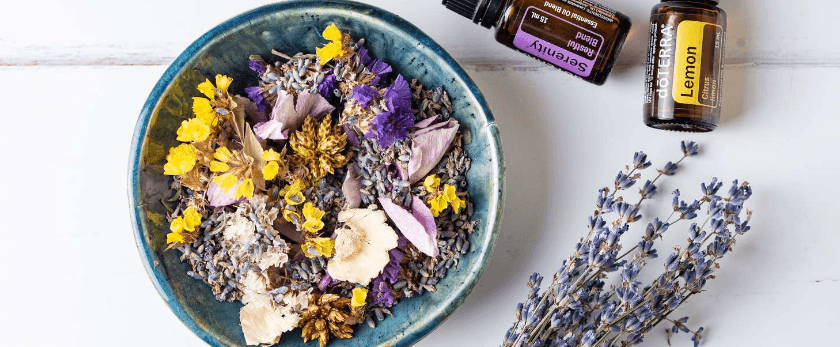In today's world, where environmental concerns are at the forefront of our minds
In today's world, where environmental concerns are at the forefront of our minds, it's important to consider the impact of our daily actions on the planet. One area where we can make a positive change is in the use of air fresheners. These products are commonly used to mask unpleasant odors in our homes, cars, and workplaces. However, many commercial air fresheners contain harmful chemicals that can have a negative impact on our health and the environment.
In this article, we will explore the reasons why traditional air fresheners are bad for the environment and how making your own homemade air fresheners can be a better, more eco-friendly option. We will also provide a list of ingredients and step-by-step instructions for making your own air fresheners at home.
Why Traditional Air Fresheners are Bad for the Environment
1. Harmful Chemicals
Most commercial air fresheners contain a variety of chemicals, including phthalates, formaldehyde, and benzene. These chemicals have been linked to various health issues, such as respiratory problems, allergies, and even cancer. When we use these air fresheners, we are not only exposing ourselves to these harmful chemicals, but we are also releasing them into the environment.
2. Air Pollution
The chemicals in traditional air fresheners can contribute to air pollution both indoors and outdoors. When we spray or plug in these products, they release volatile organic compounds (VOCs) into the air. These VOCs can react with other chemicals in the air to form ozone, a harmful air pollutant. In addition, when we dispose of these products, they can end up in landfills and release more chemicals into the environment.
3. Plastic Waste
Many air fresheners come in plastic containers that are not recyclable. This means that every time we use and dispose of these products, we are contributing to the growing problem of plastic waste. According to the Environmental Protection Agency, only 9% of plastic waste is recycled in the United States. The rest ends up in landfills or polluting our oceans and natural habitats.
Why Making Your Own Air Fresheners is Better for the Environment
1. Natural Ingredients
By making your own air fresheners, you have control over the ingredients used. You can choose natural, non-toxic ingredients that are safe for both your health and the environment. This means you can avoid harmful chemicals and reduce your exposure to them.
2. Reduce Air Pollution
Homemade air fresheners do not contain the same chemicals as commercial products, so they do not contribute to air pollution. By using natural ingredients, you can enjoy a fresh-smelling home without releasing harmful VOCs into the air.
3. Reduce Plastic Waste
When you make your own air fresheners, you can use reusable containers or choose to make them in small batches to avoid excess waste. This reduces the amount of plastic that ends up in landfills and helps to protect our planet.
Ingredients and Supplies Needed
- Essential oils (such as lavender, peppermint, or lemon)
- Distilled water
- White vinegar
- Baking soda
- Mason jars or spray bottles
- Natural fabric or paper for sachets (optional)
- Dried herbs or flowers (optional)

Directions for Making Homemade Air Fresheners
1. Essential Oil Spray
- Fill a spray bottle with 1 cup of distilled water.
- Add 10-15 drops of your preferred essential oil(s).
- Shake well before each use.
- Spray in any room for a fresh, natural scent.
2. Essential Oil Sachets
- Cut a small piece of natural fabric or paper into a square.
- Place a few drops of essential oil onto the fabric or paper.
- Add dried herbs or flowers if desired.
- Tie the fabric or paper into a sachet using a string or ribbon.
- Place the sachet in a drawer, closet, or room for a subtle scent.
3. Baking Soda Air Freshener
- Fill a mason jar with 1 cup of baking soda.
- Add 10-15 drops of essential oil(s) and mix well.
- Place the lid on the jar and poke a few holes in it.
- Place the jar in any room for a natural, long-lasting scent.
4. Vinegar Air Freshener
- Fill a spray bottle with 1 cup of white vinegar.
- Add 10-15 drops of essential oil(s).
- Shake well before each use.
- Spray in any room for a fresh, clean scent.
5. Natural Room Deodorizer
- Fill a small bowl with 1 cup of baking soda.
- Add 10-15 drops of essential oil(s) and mix well.
- Place the bowl in any room for a natural deodorizing effect.
Proper Disposal of Homemade Air Fresheners
When it's time to dispose of your homemade air fresheners, it's important to do so responsibly. Here are a few tips for proper disposal:
- For spray bottles and mason jars, rinse them out and recycle them if possible.
- For sachets, compost the natural fabric or paper and reuse the string or ribbon.
- For baking soda air fresheners, you can reuse the baking soda for cleaning purposes or dispose of it in the trash.
- For vinegar air fresheners, you can reuse the vinegar for cleaning purposes or dispose of it in the trash.
Conclusion
By making your own homemade air fresheners, you can reduce your impact on the environment and create a healthier living space for yourself and your family. With just a few simple ingredients and some creativity, you can enjoy a fresh, natural scent without harming the planet. So next time you reach for a commercial air freshener, consider making your own instead. Your health and the environment will thank you.










